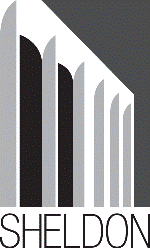Fine and Performing Arts, Hixson-Lied College of

Sheldon Museum of Art: Catalogs and Publications
Citation
Joslyn Art Museum and the Sheldon Memorial Art Galleries in cooperation with the Nebraska Centennial Commission and the National Council on the Arts through the Agency of Nebraska Arts Council, March 1967
Abstract
Anniversaries make suitable opportunities for summing up - appraising past progress and looking forward to a better future. Hence, in Nebraska's 100th year as one of the United States of America, it is appropriate that we trace activity in the arts during pioneer days and the period of expansion, pausing perhaps to offer congratulations for past accomplishments or to wish that achievement had been higher.
Middle Western culture is a transplant and a product of the times. The newly-opened territory offered opportunities for material advancement, and settlers either brought with them an acquaintance with genteel living or a desire for a better life. Practical matters and the demands of everyday living had to come first. But when the first days of prosperity arrived, the successful could indulge themselves in comfort and luxuries which naturally reflected the tastes of the decade. The decorative arts were patterned on plush Victorian parlors adapted from royal palaces. Paintings fitted the decor, being usually copies of old masters or derivatives of European Salon paintings which featured pleasing landscapes, romanticized peasants, or story-telling scenes. It is not to be expected to find a collector who would explore the work of the painters experimenting in such unproved techniques as impressionism, even though examples by painters now world-famous were exhibited in the state. In general the work of local artists followed the national taste. As might be expected, most art activity centered in the larger towns of lincoln and Omaha, both for creative artists and for patrons of the arts.
The illustrations in the first part of this booklet show paintings from the early exhibitions in Nebraska which can still be seen today, or other works by the same artists. These pictures represent only a sampling of the collections and are intended to show the variety of painting types and the changing pattern of styles. Many of the paintings may seem dated to us now, but they represent not only the taste of their patrons, but reflect attitudes of each period, just as painting in 1967 expresses the new forces with which we are confronted - electronics, mechanization, splitting atoms and exploring outer space. Once the artist knows how the earth is flattened and patterned by a view from 30,000 feet in the sky, he can no longer present a landscape from the view-point of a rural shepherd without ignoring the realities of his own existence. Paintings of today should be different from those of yesterday. The work of representative Nebraska artists of today illustrated in this catalog gives a sampling of the varied and individual work being done now. While this work shows the influence of contemporary trends, all art evolves from the past. The earliest artists who painted in Nebraska cannot be claimed as Nebraskans. They were artists-explorers who passed through during the first half of the 19th Century as expedition members, or in the latter half of the Century as professional artists who were inspired by the glorious vistas of the plains and the mountains and whose paintings found a ready market among those fascinated by the new West. However, they are a part of our heritage and should be mentioned.


Comments
All images are copyright by the original artists. Publication copyright 1967 The Regents of the University of Nebraska